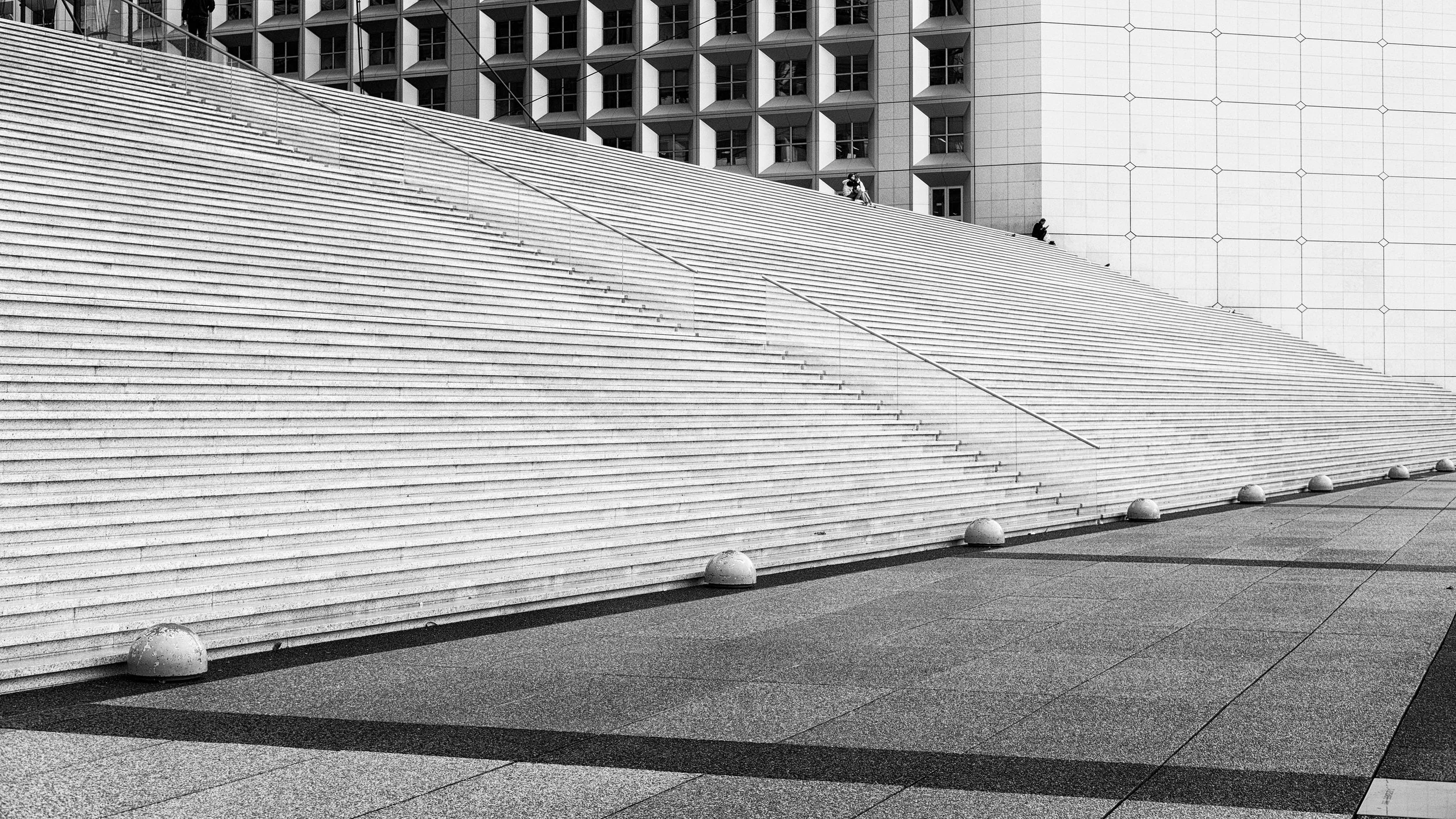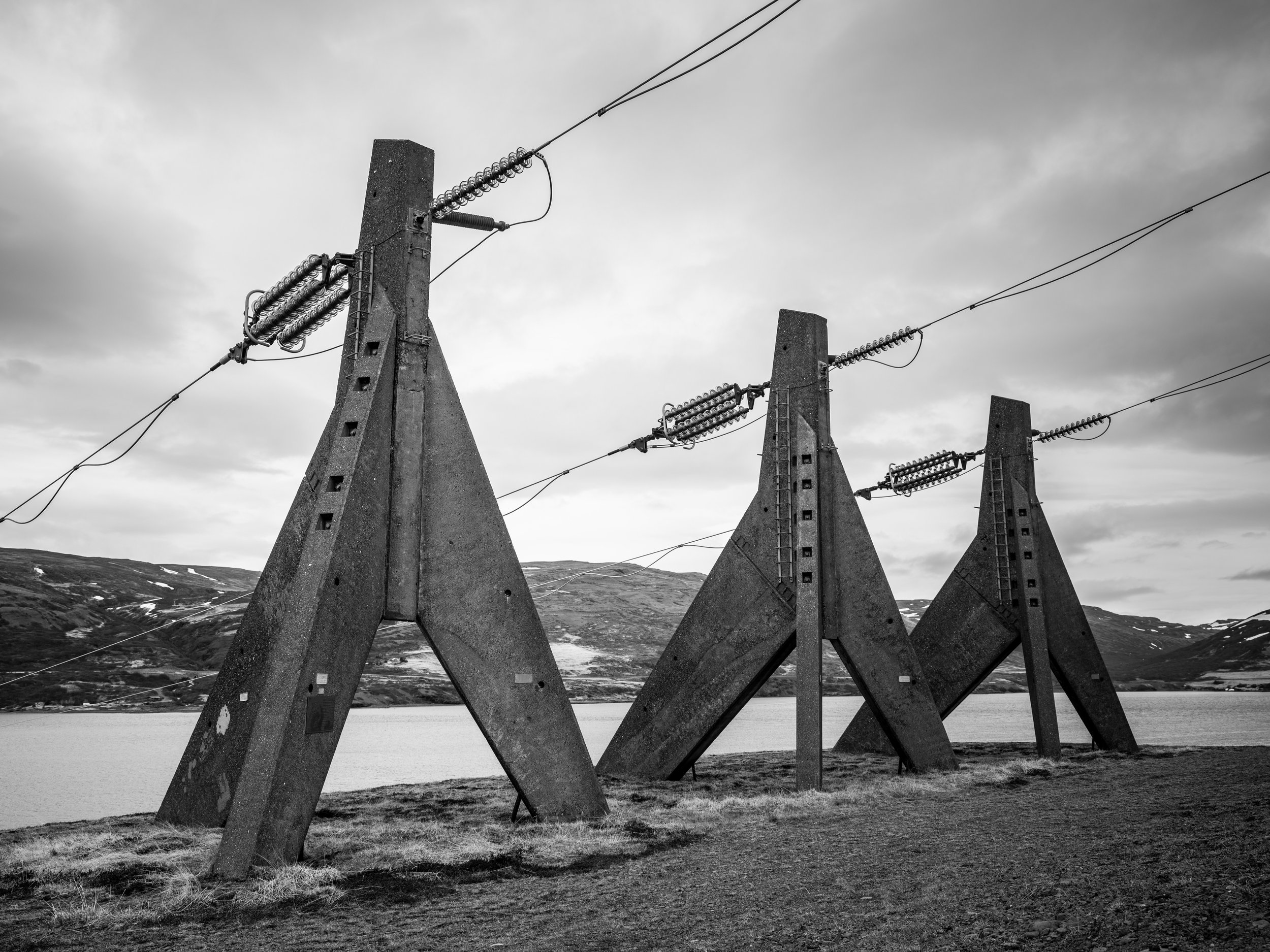Blog
A blog about photography and travel.
Working in Málaga
Escaping the Icelandic winter
Iceland is a good place to be except in winter, and in particular January. It’s okay until after New Year’s, but then the darkness starts to gets to you. I’ve been meaning to try to work from a sunny place abroad for many years, and now I finally took the plunge and rented an apartment in Málaga for four weeks. I was worried about working remotely for such a long time but it turned out really well.
I was in Málaga a long time ago and had good memories from there. It’s a nice small city with a lively atmosphere, not too touristy and very affordable. Málaga is where Picasso was born and there’s an excellent gallery there in his honor, also a new Pompidou modern-art museum. The city sports a large, working harbor area which has been nicely integrated with a promenade and a cruise ship terminal. Loved to go the evening and have a beer in the sun.
The three weekends I was there I rented a car and explored the surroundings on the south coast, from Tarifa to Almeria. I have to say that Málaga was the best place, although as a ship photography enthusiast it was great to get to Gibraltar and Algeciras where a lot of ships pass through for bunkering.







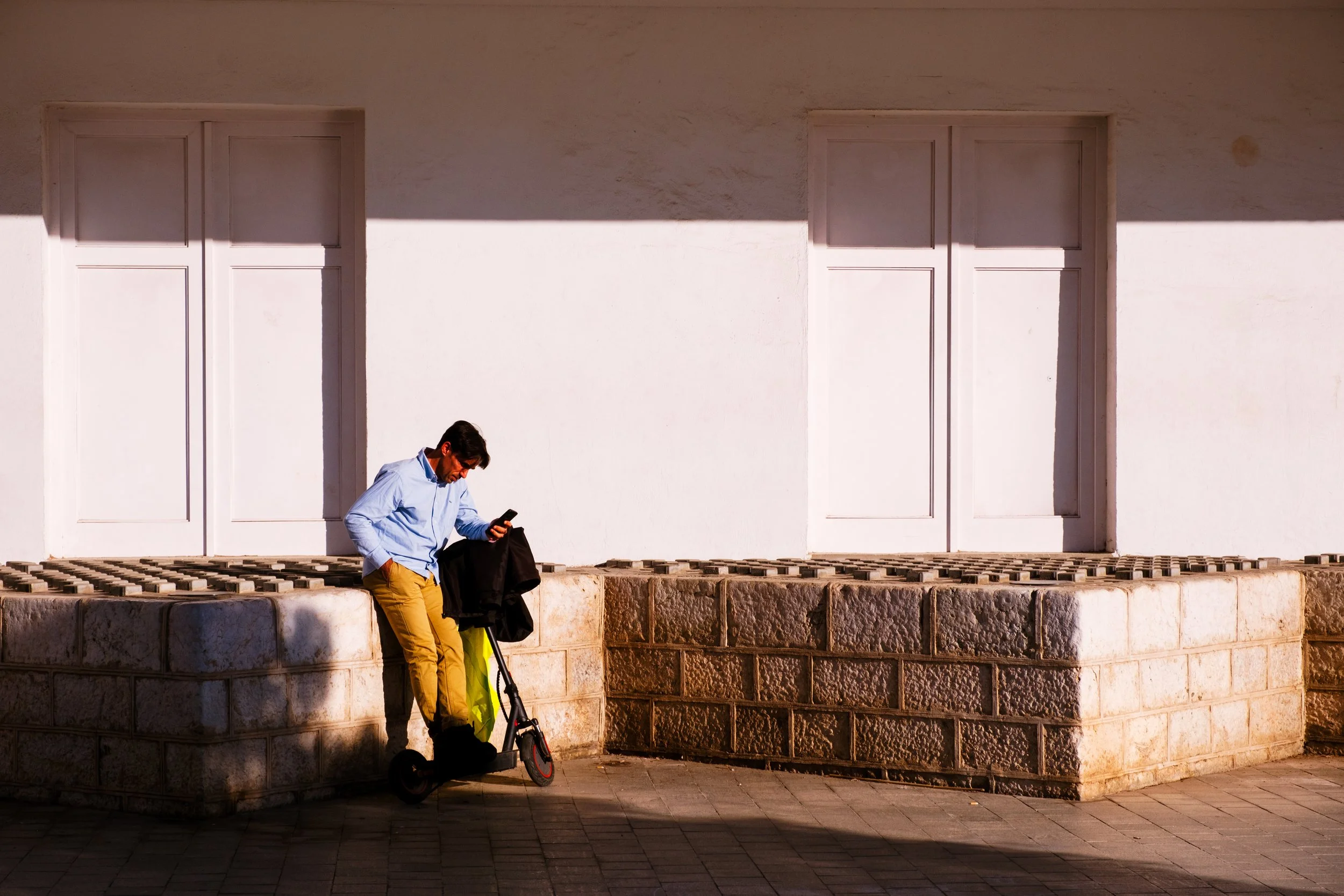








































London in winter
A few winter days in London, as usual




















Southwest England
A week re-exploring southwest England
Following on from my trip to the English south coast earlier in the year I decided to explore further. So i spent a couple of days on the Isle of Wight, followed by Weymouth, Plymouth, Bristol and places in between. An interesting area but perhaps too much to cover in a week. I quite liked Isle of Wight, it seemed a bit of a world on it’s own, very much removed from all the hustle and bustle of the mainland.
























England vacation
Vacation in the south of England
For this year’s summer vacation I had a family trip to the south coast of England. We started with one week in Cornwall, an area well worth exploring with it’s dramatic coastline, old mines and picturesque small towns. Then we spent one week in Hastings, where my parents had a holiday home back in the day.
I really like being in the UK. It’s got a lot of beautiful spots, a lot of history, and it’s just easy to be there.


































































Nova Scotia
A week exploring Nova Scotia
Early June I went by myself to Nova Scotia for a week’s trip. Icelandair had just started flying there (I was on the first flight), and I’d never been there before. I didn’t know a lot about it except that the company I work for opened its first foreign office there back in the 1980’s, and we had a lot of business there in the fishing industry.
So it was an exploration of sorts, with pros and cons from my point of view.
Pros:
Cape Breton is beautiful and not too touristy. Also the area south of Halifax (Peggy’s Cove, Lunenburg), although a bit more touristy.
If you’re into history don’t miss Fort Louisburg.
If you’re into lighthouses (which I am) there’s a lot of them.
If you’re into ship spotting (which I am as well) there’s a couple of places that are good, especially Halifax.
The Annapolis Royal botanical garden is well worth a visit.
In season, the lobster and oysters are fabulous. But you have to find a good restaurant for it, otherwise you’ll get disappointed.
Cons:
Nova Scotia is quite large and there are big parts of it that are not that interesting. Especially for landscapes. Expect to do a lot of driving.
Halifax has a nice, small seafront area but otherwise it’s a bit dull.
If I should go there again I would go for the autumn colors (the whole island is basically nothing but coast and trees) and I would concentrate on Cape Breton.































































Along the Rhine
Exploring the Rhine and it’s tributaries
In the latter half of November I preceded a work trip with a few days in the Rhineland-Palatinate where the Mosel and Neckar rivers join the Rhine, together with my brother Stefan.
The landscape was dominated by the rivers, beautifully lined with small towns, hill-top castles and forests in their still-colorful late autumn foliage. My favorite spot was Heidelberg, an age-old seat of learning on the banks of the Neckar which completely escaped the ravages of WWII.
In amongst all this natural beauty you also find the heartland of German industry. The BASF complex, on the banks of the Rhine in Ludwighshafen, is the largest integrated chemical plant in the world, covering 10 square kilometers. Next time I will bring a drone to take an aerial view of it.
We stayed in Koblenz for one night and Mannheim for two nights, both fairly unremarkable cities.
Photos were taken on Fujifilm XT5 and XE4 cameras using the XF16-55, XF50-140 and XF23f1.4 lenses.
























Wales
Driving around Anglesey and Snowdon National Park in the fall.
For the fourth time this year I went on a trip to the UK, this time to the northern part of Wales. I’ve not been there before, but it’s easy to get there from Iceland and from what I’ve seen from others it’s a nice spot for photography. So why not.
I stayed in Caernarfon, which was an inspired choice. It’s kind of central, with Anglesey to the west and Snowdonia National Park to the east. There’s an excellent inn there I can recommend (Black Boy Inn). A famous YouTube video comes to mind, just kidding :-).
Weather was all kinds, both stormy and sunny, but I guess that’s par for the course at this time of year. I was a bit too early for the fall colors, so that’s a reason to go again.
The photos are take on an GFX50R with the 32-62mm and 100-200mm lenses, and a Mavic 2 Pro drone.




































US Northwest
Summer vacation in Oregon and Washington
For summer vacation I travelled with my sister and her family for a couple of weeks in the US Northwest, staying in Vancouver WA on the border of Oregon and Washington. It was a family vacation in a nice house, with lots of good food and wine, my niece’s birthday and all around fun.
In terms of nature, the area sports the magnificent Columbia River Gorge, the Oregon Coast and a set of dramatic volcanic mountains such Mount Hood and Mount St Helens. Quite a large area to cover but absolutely stunning. Definitely worth another visit.
























Around Manchester
Weekend in Manchester, Blackpool and Sheffield
Towards the end of May I spent a long weekend in Manchester. Booked a hotel downtown and took a couple of train trips to Blackpool and Sheffield.
These three cities may not sound very attractive, and have been going through some hard times over the last decades, but I found then all surprisingly nice really. Manchester is being transformed into a modern metropolis, Blackpool is not the cheap, run-down tourist trap I imagined it to be, and Sheffield is successfully building on its heritage of coal and steel industry to become a hub of technology and learning. What’s the fuss all about?




















Easter in Munich
A very long Easter weekend in Munich
Easter is a good time for Icelanders to travel abroad. It’s a 5-day weekend and spring has started to arrive in Europe while in Iceland it’s almost winter still. So for Easter I usually go somewhere abroad. This time it was to Munich, where I stayed for a full week.
Munich city center was restored after WWII to a degree I’ve not seen elsewhere in Germany. Take for example the Residenz palace: unlike Versailles where you visit a handful of rooms, the Residenz not only has a number of breathtaking galleries but you can also walk through the complete palace, where everything has been restored. You can literally spend hours there.
Munich is a city of attractive public spaces, with beautiful historical buildings, an excellent public transport system, the Olympic Park, the Englischer Garten, and so on. An obviously affluent city, very German, with a stark reminder to the past in the Dachau Concentration Camp Memorial Site just outside the city.
A short train ride from Munich you find Ulm, Augsburg and Nurnberg, and the foothills Alps are not far to the south. I did not visit all these places so there’s room to go again.
I was happy with the photography overall but, as usual, street photography in Germany was difficult.







































Weekend in Brussels
I’ve visited Brussels on a number of occasions, both privately and through work. The city is easily accessible from the Netherlands, where I frequently work, and there’s also a direct flight from Iceland. The vibe is a bit in between Amsterdam and Paris, with excellent food and beer, relatively easy on the wallet, and a quirky and touristy atmosphere - great for street photography. There are also a lot of interesting cities easily accessible by train: Ghent, Brugge, Antwerpen, Leuven, Mons, and Liege, to name a few. All of them easily worth a day trip.
Towards the end of April I went on a short weekend trip there with my brother Stefán, from Thursday to Sunday. We stayed in the city for the most part, only went on a short trip to Leuven (the beer capital of the world, as it turns out). There were only occasional glimpses of good light but it was still a nice photography weekend.
Two gentlemen (brothers?) enjoying life at the Grand Place. Fujifilm XT5+XF50mmF2.
Wannabe skater near the skateboarding area at Rue de la Chapelle. Fujifilm XT5+XF35mmF2.
My brother Stefán at the Moeder Lambic Fontainas, having one of many beers. Fujifilm XT5+XF35mmF2.
Influencers at the Grand Place. Fujifilm XT5 + XF50mmF2.
Young lady without a happy face at Rue des Bouchers. Fujifilm XT5 + XF50mmF2.
Hipster ladies? at Rue des Bouchers. Fujifilm XT5 + XF50mmF2.
More hipster ladies at Rue des Bouchers. Fujifilm XT5 + XF23mmF1.4.
The extravagantly ornate city hall in Leuven. Fujifilm XT5 + XF23mmF1.4.
Two blokes in Leuven, one sitting uncomfortably. Fujifilm XT5 + XF23mmF1.4.
Just behind the guys above, this one was much more comfortable. Fujifilm XT5+XF23mmF1.4.
At the market in Leuven. Bike repair shop in an O Transit. Fujifilm XT5 + XF23mmF1.4.
Sharp dressed guy, with onlookers. Fujifilm XT5 + XF35mm F2.0.
Two blokes at Rue de Charles Buls. Fujiflim XT5 + XF23mmF1.4.
Hipster ladies at the Grand Place. Fujifilm XT5 + XF35mmF2.
Le Chat Déambule, in-the-rain version. Fujifilm XT5 + XF35mmF2.
Place Sainte Catherine. Fujifilm XT5+XF23mmF1.4.
Grown up hipsters at the Grand Place. Fujifilm XT5 + XF23mmF1.4.
Colorful guy happy at being photographed. Fujifilm XT5+XF35mmF2.
Color-coded tourists neear Gare Central. Fujifilm XT5+XF35mmF2.
Berlin
Short trip to Berlin squeezed in between Christmas and New Year’s
Between Christmas and New Year I travelled with my brother to Berlin on a photography and city trip. Lots of walking, taking photos and having beers. We also took a day trip to Leipzig and Wittenberg, places I’ve not been before, now off the bucket list.
I like Berlin. It’s a bit scattered and disjointed, having been two cities for a long time, but it manages to be both down to earth and bohemian at the same time, which is an interesting mix. Its turbulent history is visible everywhere, and some places are quite emotional to visit. This still sits badly with many people, but at least you can give the Germans credit for not trying to hide what has happened. A case in point is the Neue Wache, a powerful testimony to the horrors of war.
Photos are taken with the Fujifilm XT-5, with XF10-24mm, XF50mmF2.0 and XF80mmF2.8 lenses, and a GFX50R with the GF80mm lens. We got good light a few times, and the GFX50R is just marvelous when that happens.








































































Highgate Cemetery
Discovery of a magical place in London
After having visited London countless times, and having explored the city extensively, I was amazed to discover a new location: Highgate Cemetery. I learned of its existence from the newest Cormoran Strike audio book, where the cemetery features heavily.
Not only is the cemetery extraordinary, but I happened to go there on a frozen and foggy Sunday morning, with every frozen strand of cobweb highlighted. The atmosphere was magical. I even met a fox, which posed just long enough for me to take a photo.
Otherwise I have to say that London was not at its best, so the trip was pretty dull in terms of photography. But I did spot, and take a snap of, a Zelensky lookalike!
This was the first outing with my new Fujifilm XT5, which I really like.











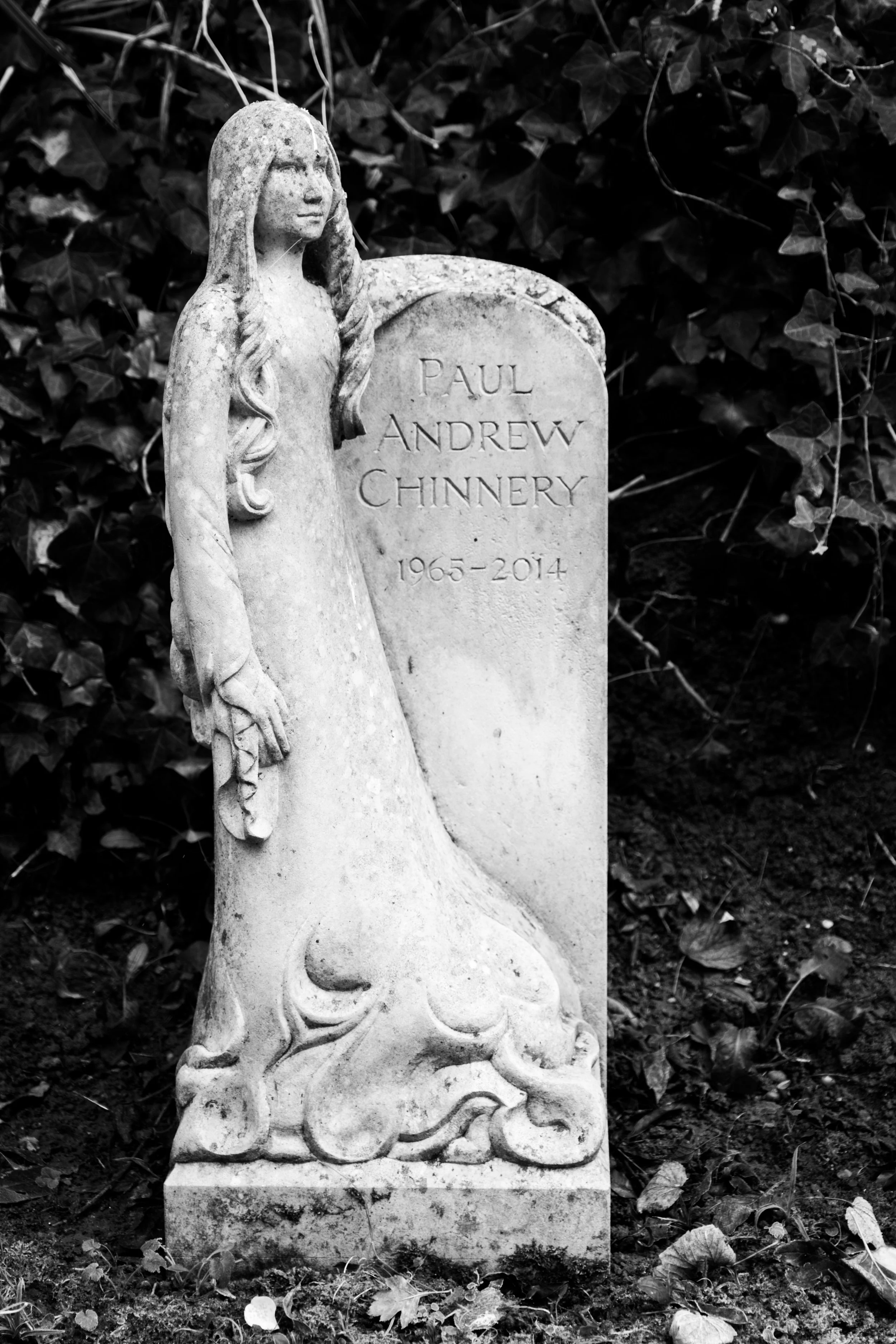




















Paris
Solo trip to Paris
On short notice I booked a flight to Paris for a long weekend in November. I went by myself, with little plans other than to take photos and walk around. I stayed at the CitizenM hotel in La Défense, the kind of big-scale city redevelopment that is destined to be horrible but actually succeeds.
Like the last time I was in Paris, I was very happy with the photos I took. There’s such a vibrancy to Paris that you don’t really experience in other large European cities.
The photos are taken with the Fujifilm XE4 using a variety of lenses: XF16mmF1.4, XF27mmF2.8, XF35mmF2.0, XF50mmF2.0 and XF50-140F2.8. Quite a bit to carry around, and a lot of lens changes, but I try to mix it up so that every time I go I bring different equipment.
Weekend in Copenhagen
An autumn weekend in Copenhagen
I attended a three-day management meeting in Copenhagen from Monday to Wednesday, so I took the opportunity to travel out on Friday and spend the weekend in one of my favorite cities. Just walking around with the camera, dropping in on interesting restaurants and bars, and not thinking about much. There was not a lot of good light, so I focused on photographing the autumn colors, and visited the Botanical Gardens, which are always good for a few shots. I also took the train to Malmö, on the other side of the water.
The photographs are take, on a Fujifilm XE4, with various lenses, and a GFX50R with the 80mm f1.7 lens.





















Ireland
A roadtrip with an optimistic plan
To finish off my vacation, and due to a temporary frost in the relationship with my employer, I decided, on short notice, to take a trip to Ireland. I’ve been to Northern Ireland a few times, for work, but never really been to Ireland proper.
I booked a flight and a car, and accommodation one day at a time. The rough idea was to drive around Ireland and photograph the lighthouses on the coast. This turned out to be wildly optimistic, both because of the size of the island and the fact that the lighthouses are not generally accessible. I thought I could walk right up to them like in Iceland, but it turns out that they are mostly closed off to the public and therefore quite tricky or impossible to photograph. I managed a few lighthouses though, and made it around half the coast, from Dublin to the southwest tip, and then to the Cliffs of Moher.
On first visit I find Ireland to be not so spectacular to photograph, but a very comfortable place to be in. Perhaps a bit insular, like Iceland.
All the photographs are taken with a Fujifilm XE4 camera, using various lenses.





My favorite place on the trip was the area around Mizen Head. A remote place with winding, narrow roads, impressive cliffs, and beautiful seascapes. Mizen Head itself was a well organized place for tourists to visit, highly recommended.
The religious heritage is visible everywhere.





I found the Cliffs of Moher underwhelming, but nearby there’s a geographical formation/area called The Burren, which is very interesting.
Some street photography was also had, and odds and ends.










Iceland hinterlands
A camping trip to Eldgjá, Langisjór and Lakagígar
Towards the end of summer I went on a 3-night camping trip to Eldgjá and Lakagígar, an area which I’ve not been to before. Due to river crossings you need a 4x4 to get there, so it’s relatively quite in terms of tourists.
Day 1 - Eldgjá
We camped in Hólaskjól, drove to Eldgjá and hiked around the area for the rest of the day, going all the way to Gjátindur. Eldgjá is an amazing place and is part of a crater line formed in the largest lava eruption in recent global history (939AD). The star of the show is Ófærufoss, a magnificent waterfall. It used to have a stone arch over the lowest falls, but it collapsed in 1993.
Day 2 - Langisjór
Langisjór (Long sea) is a 20km long lake that sits between two volcanic ridges. This is an area of outstanding desolate beauty, with black volcanic rocks and green moss-covered mountains. Perfect for hiking.
Day 3 - Lakagígar
Although Lakagígar are close to Eldgjá you need to drive down to the ring-road to cross the Skaftá river. So we moved camp to Blágil. The Lakagígar volcanic ridge were formed in a massive eruption 1783-1784, an eruption that devastated Iceland and cause world-wide crop failures and famines. The tallest crater, Laki, is in the middle of ridge. The easy hike up affords a magnificent view of the entire area.



























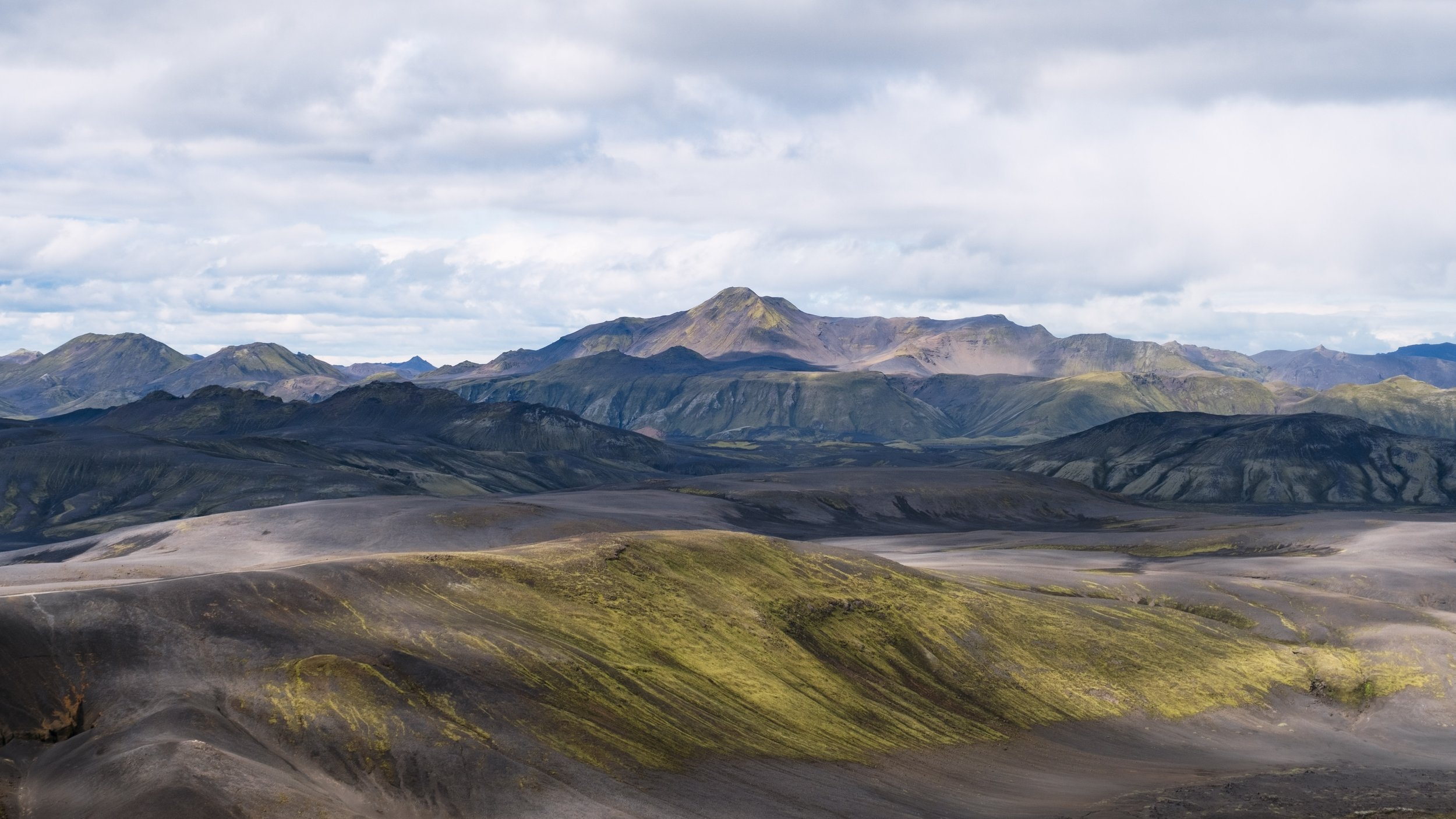




Portugal
Summer vacation in Portugal
For summer vacation this year the destination was Portugal: one week on the coast and one week in Lisbon. I’ve only been to Portugal once before, almost 20 years ago. I liked it then and I like it still. It strikes the right balance of being clean, safe, livable and interesting for visitors. There are no massive hoards of tourists, the food is simple but good, with lots of seafood, and the local wines are excellent. I’m not an expert on Portuguese culture after two weeks, but everybody was friendly and helpful enough, and very much matter-of-fact, which is something I appreciate.
I brought my Fujifilm XE4, along with the XF16mmf1.4, XF23mmf1.4, XF16-55 and XF50-140. The XF16-55 is a great walkaround lens, if a tad large for the XE4. I recently tried the XF16-80, and I previously owned the XF18-55, and I can now honestly say that the XF16-55 is by far my favorite one.
On the coast
The first week we stayed near Sao Martinho do Porto, a small sea-side town with a nice beach. A bit further north is Nazaré, with an even nicer beach, and famed for its massive waves. I can recommend both towns. They are resort towns but almost all the visitors are locals.
Inland there was a big heatwave with forest fires and everything, but on the coast it was a nice 20-25 °C. Lucky for us.
There are other interesting places close by, such as Batalha, Peniche, and Óbidos, which are all worth a visit. Further north is Figueira da Foz, a bustling city of industry and tourism. In between there is the rugged Atlantic coast, which must be magnificent in a good winter storm.




























Lisbon
After our time on the coast we went to Lisbon, where we stayed another week. The heatwave was over by then, although we did have a couple of very warm days in the city.
Lisbon is a bit more touristy, but still in a good, old-fashioned way, with cobbled streets and old trams and tuk-tuks transporting the tourists around. It’s all built on hills, and we stayed in Bairro Alto (Upper District) at the very top, on the third floor of an old building, so there was a lot of ascending and descending!
It’s not an expensive city, with good public transport, and very walkable. There’s loads of things for the visitor to experience, and also possible to take the train to Cascais and Sintra for a day trip. Definitely worth a visit.








































The Westfjords
A trip to the Westjords in late spring
I have been wanting to go to the Westfjords of Iceland for a while. It’s a bit far to go so you need a long weekend at least, and the weather has to co-operate to some degree. Late May, the stars lined up: a 4-day weekend and a reasonable weather forecast meant that it was time to go.
I spent two days in the southern part and 2 days in the area around Ísafjörður. In the end, the weather was actually too good for photography, but at least I could enjoy a nice beer sitting outside in the sun at Ísafjörður.
The Westfjords are full of dramatic landscapes, with deep fjords and high mountains. It’s off the ring road, so there are relatively few tourists around.
My favorite places are Rauðisandur, Látrabjarg, Ketildalir, Dynjandi and the area around Ísafjörður, some of which I managed to visit during the trip.
Weekend in Switzerland
A weekend of photography with my brother
Went for a short trip with my brother to Switzerland. Simple plan: fly to Zürich, drive to Davos and stay for three nights, drive back to Zürich and stay one night and then fly back home.
I’ve not been to Switzerland properly before. It is of course pretty as a postcard and as an Icelander I can really admire the high mountains, deep valleys and dramatic mountain passes. The weather co-operated and the fall colors were great. So overall a few nice and quiet days during off-season, nothing much going on.















